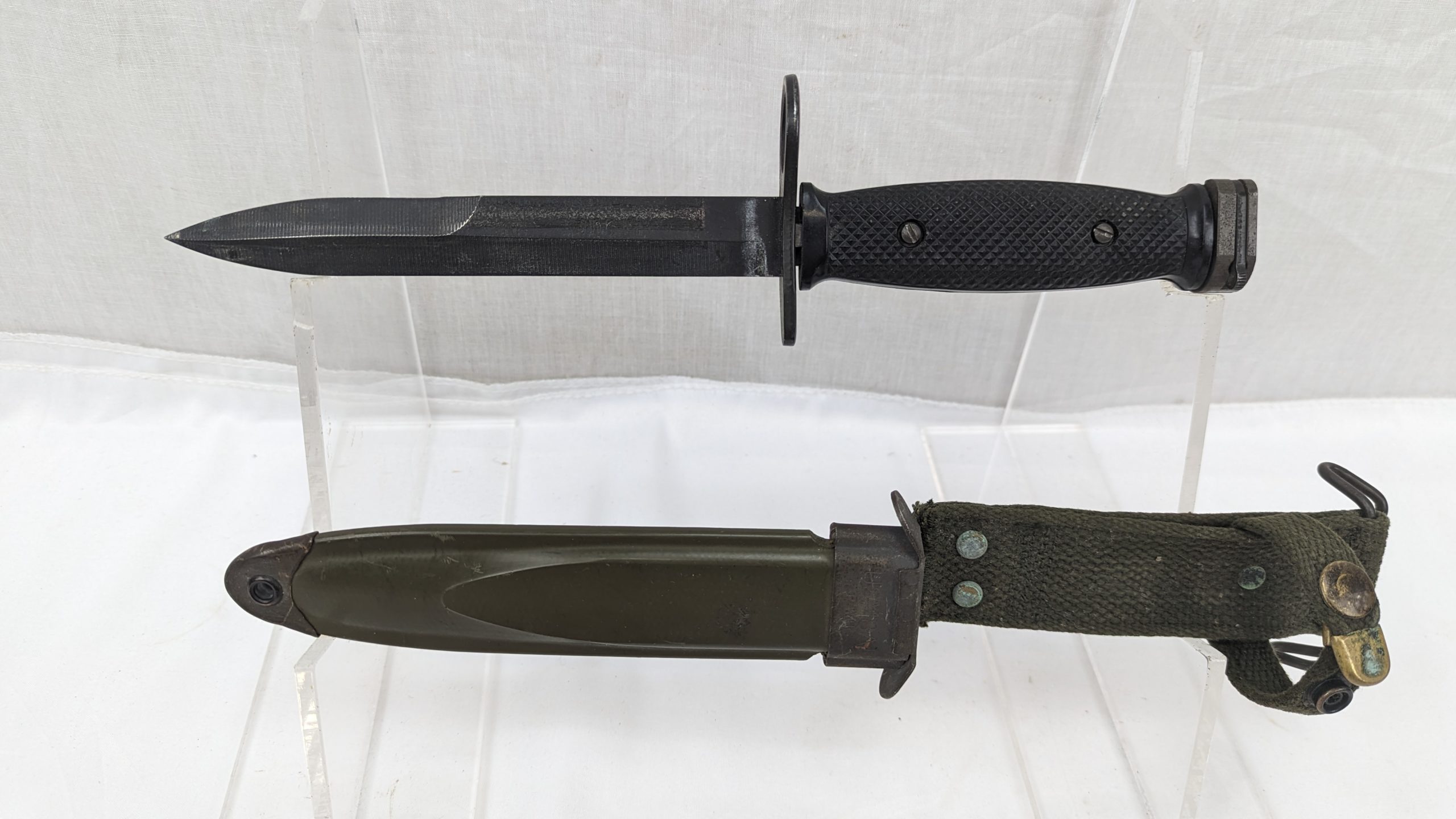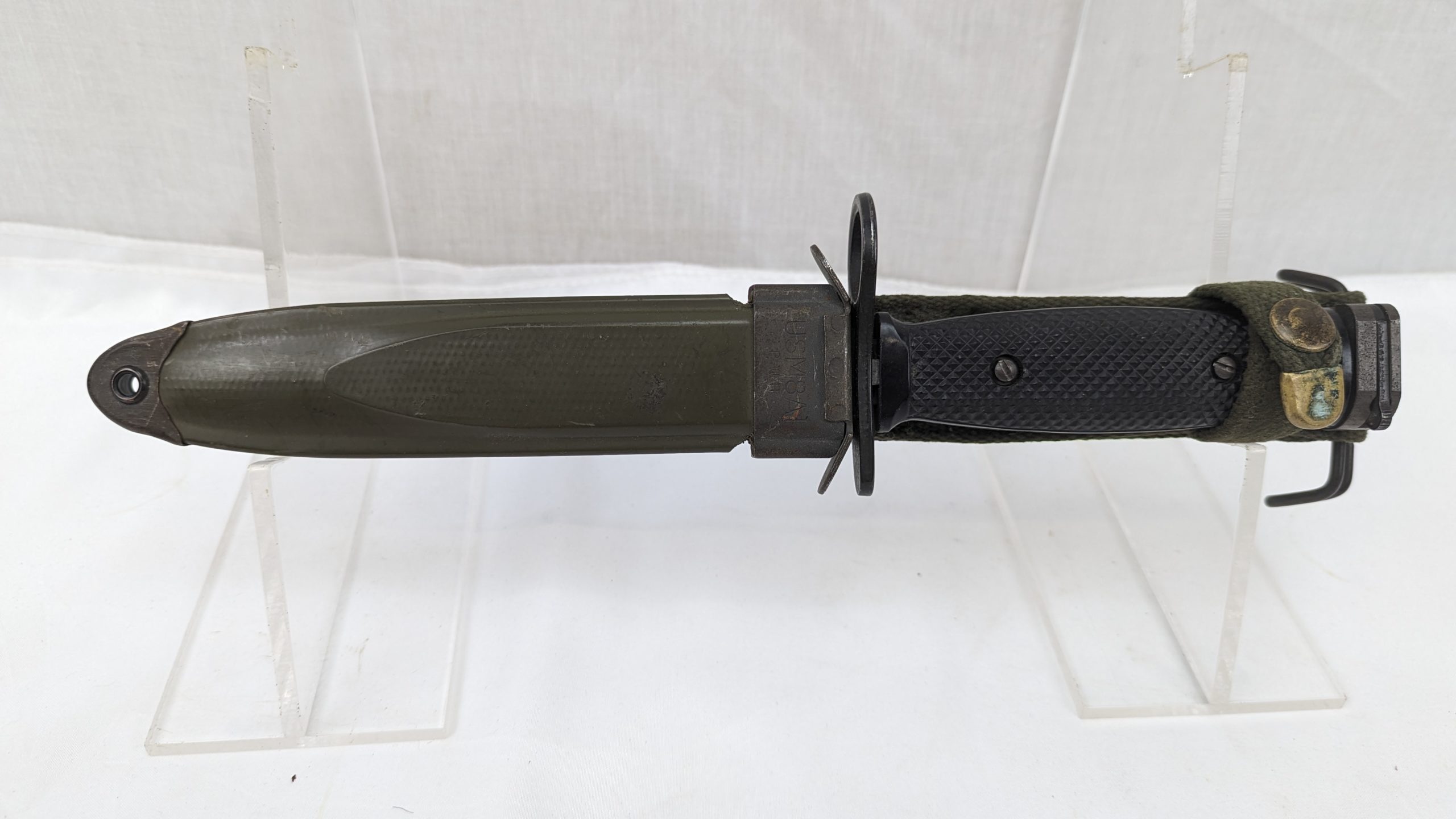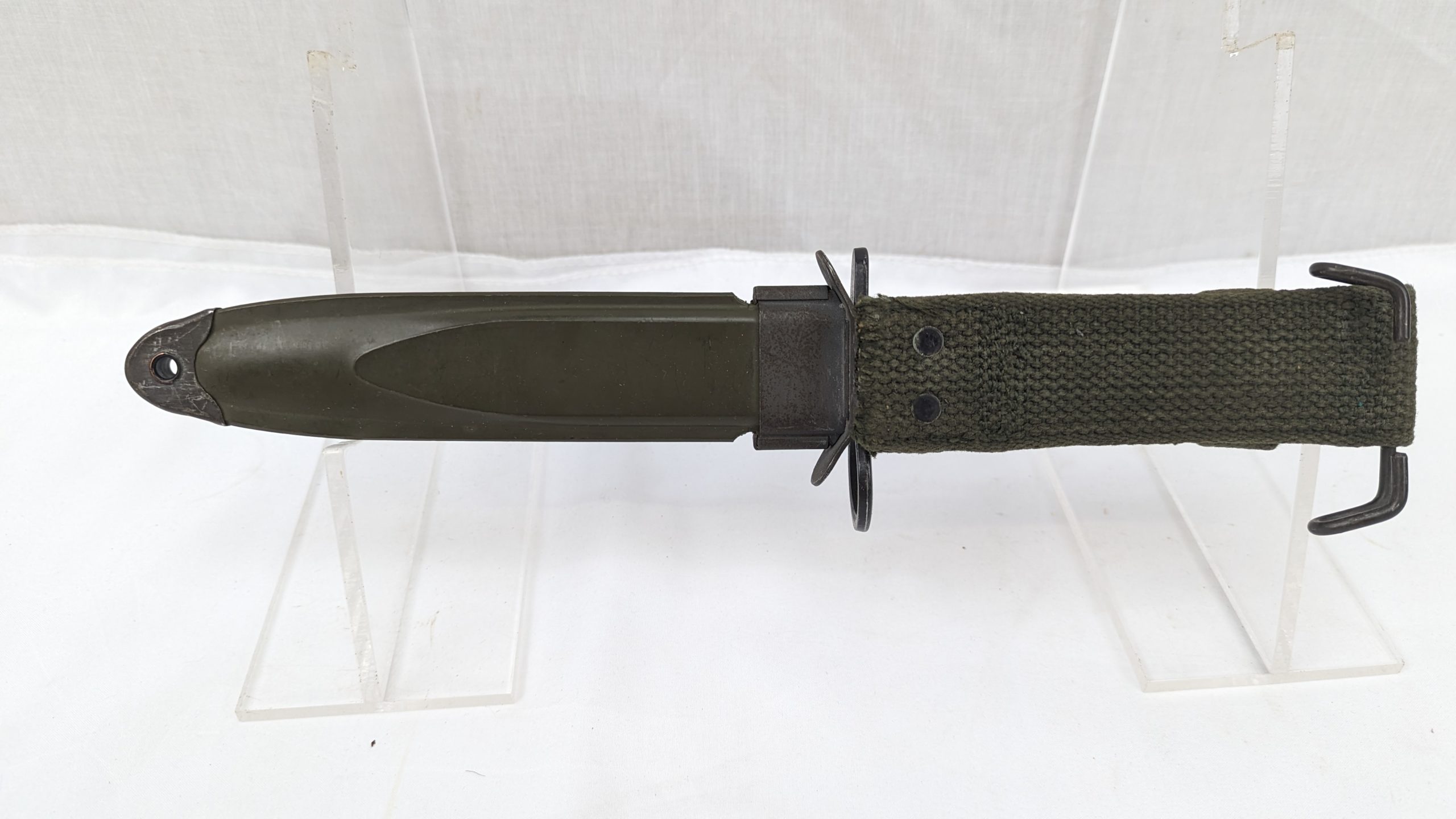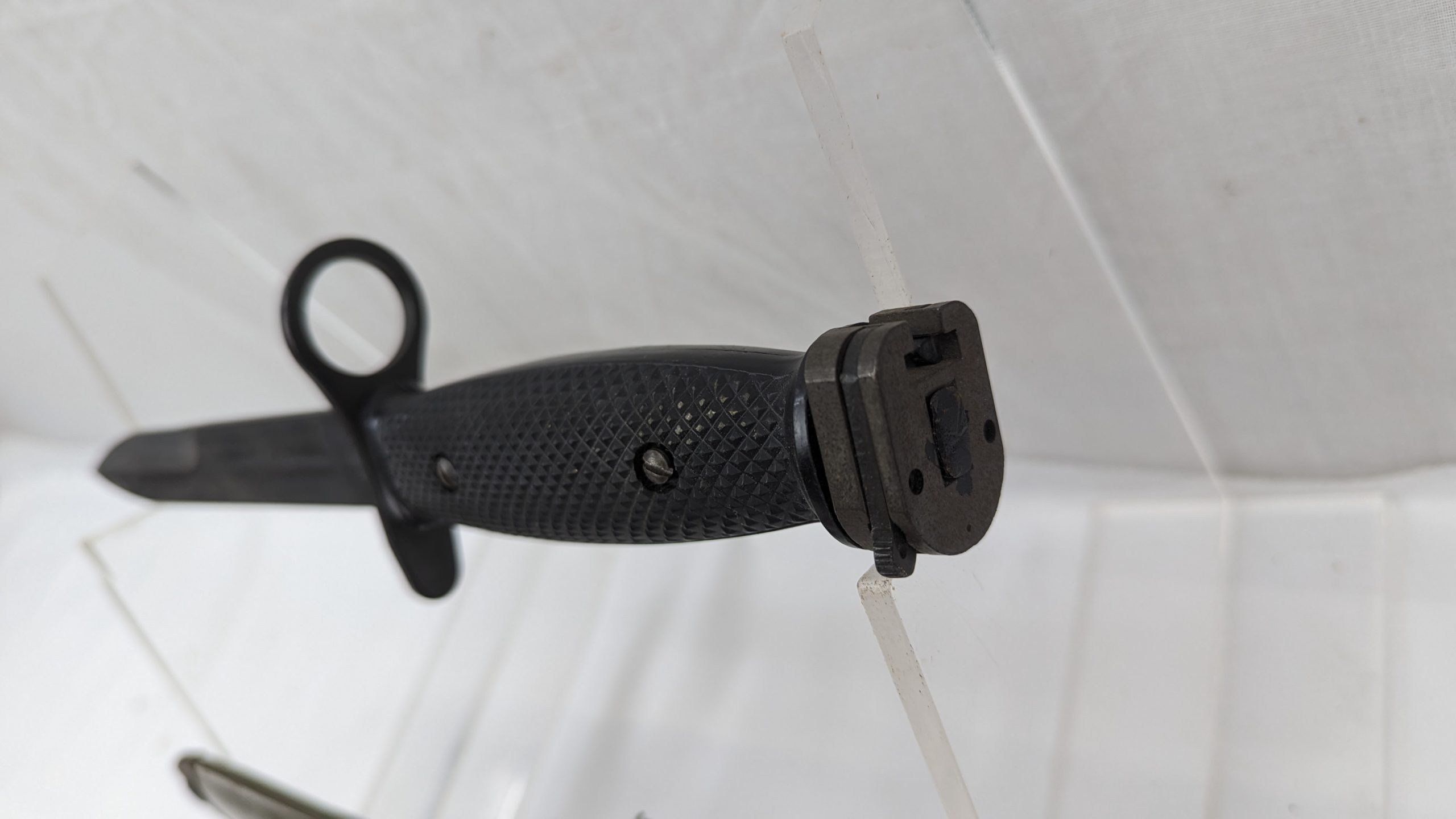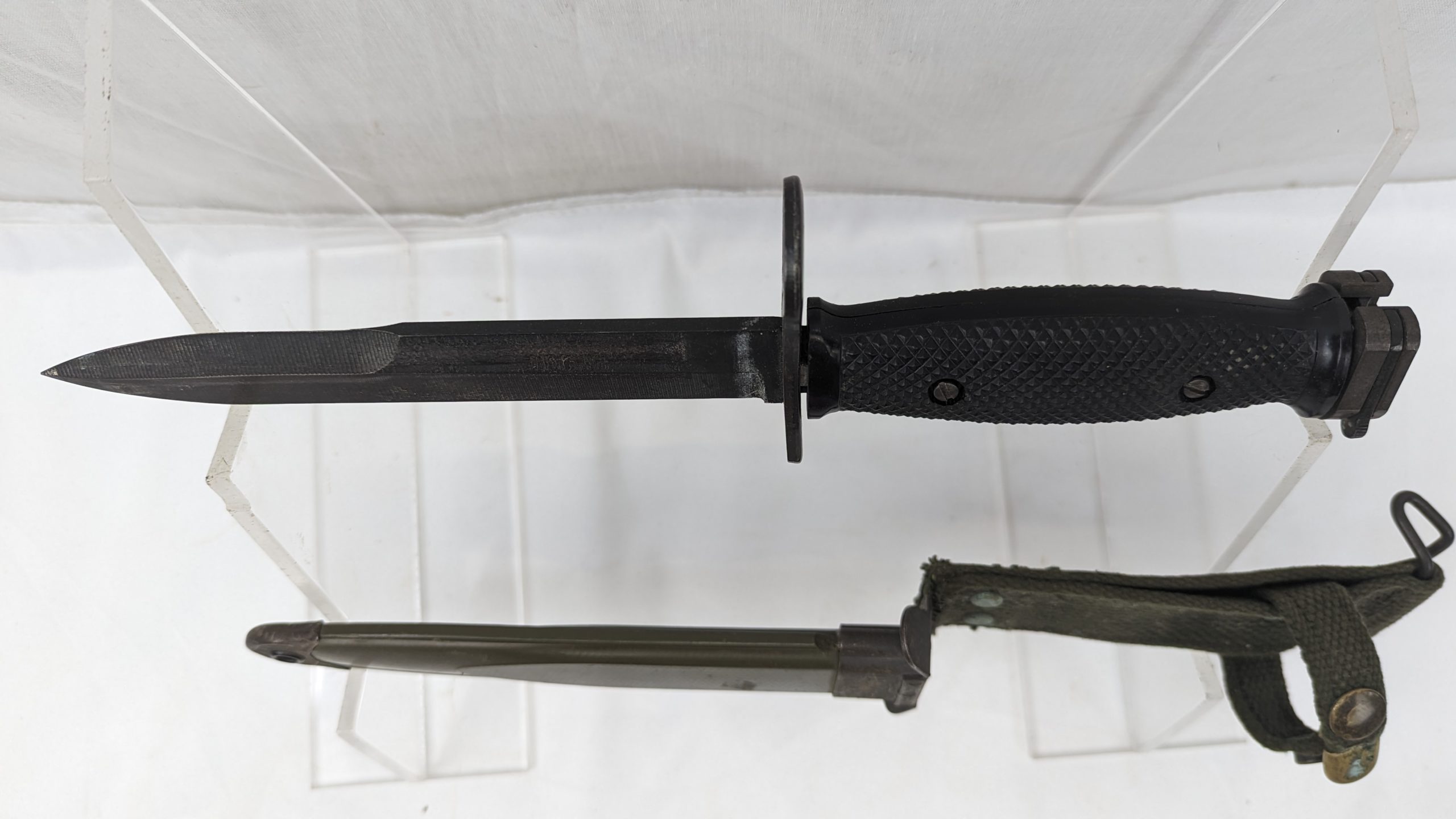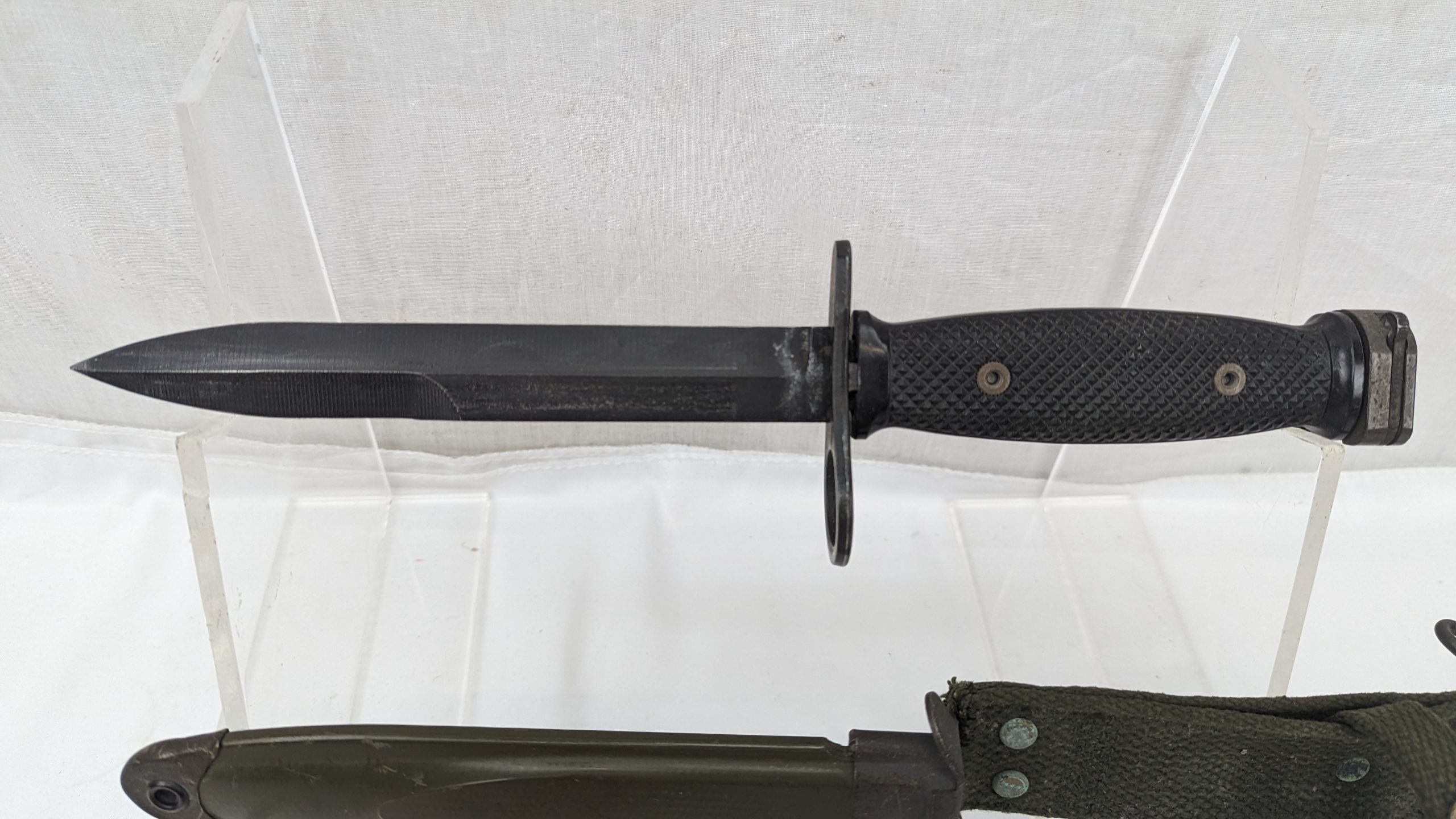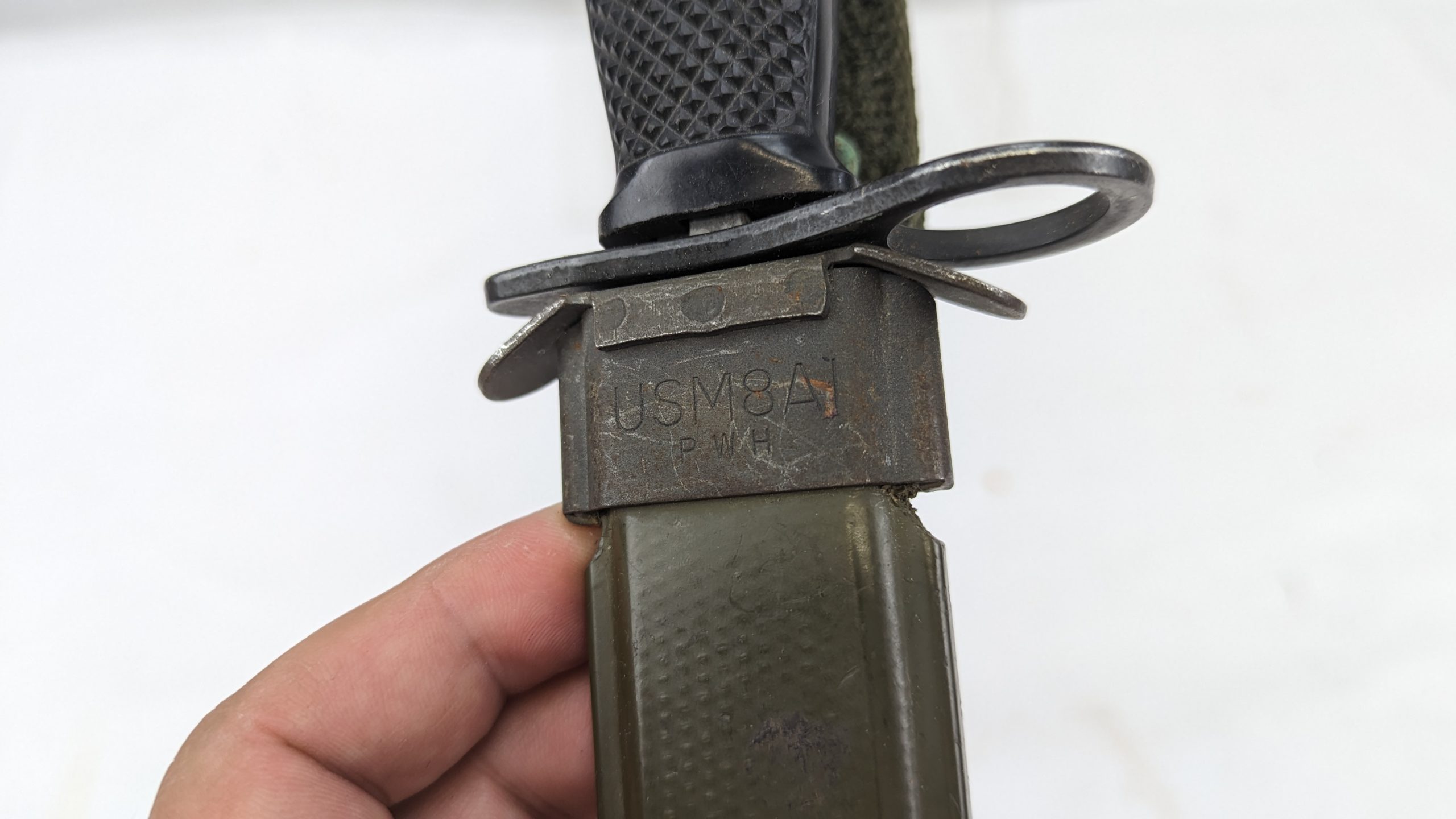~ A Vietnam War period U.S. M8A1 PWH Bayonet and Scabbard ~
The U.S. M8A1 PWH bayonet is a type of combat knife and bayonet that was used by the United States military. It was designed to be affixed to the end of rifles to serve as both a close combat weapon and a utility tool.
The M8A1 PWH bayonet is characterized by its distinctive design, which includes a spear-point blade and a crossguard with a locking mechanism to attach it to a rifle. The blade is typically around 6.75 inches (17.1 cm) long and is made of steel, providing a sturdy and sharp edge. The bayonet features a handle made of various materials, including plastic or fiberglass, which is designed to be comfortable to grip and provides a secure hold even in wet conditions.
~ Condition ~
Please refer to the pictures.
History:
The M8A1 PWH bayonet is an evolution of the earlier M4 bayonet, which was designed during World War II for use with the M1 Garand rifle. The M8 bayonet was an improved version of the M4 and saw use in the Korean War and beyond. The M8A1 PWH is a specific variant of the M8 bayonet that was manufactured by the Pal Blade and Tool Company, hence the “PWH” designation.
The M8A1 PWH bayonet was used primarily during the Vietnam War, where it was often issued to soldiers armed with the M14 and M16 rifles. It provided soldiers with a versatile tool for close combat situations and could also serve as a multipurpose utility knife. The wire cutter feature on the scabbard was especially useful in the jungle environment where soldiers encountered various obstacles, including barbed wire.
The M8A1 PWH bayonet continued to see use even after the Vietnam War, though it was eventually replaced by more modern bayonet designs as military equipment evolved. It remains a symbol of the era and is collected by militaria enthusiasts and historians.
Overall, the M8A1 PWH bayonet is a significant part of U.S. military history, representing an era when bayonets were still a standard accessory for rifles, serving both combat and utility functions.
JAQC0

